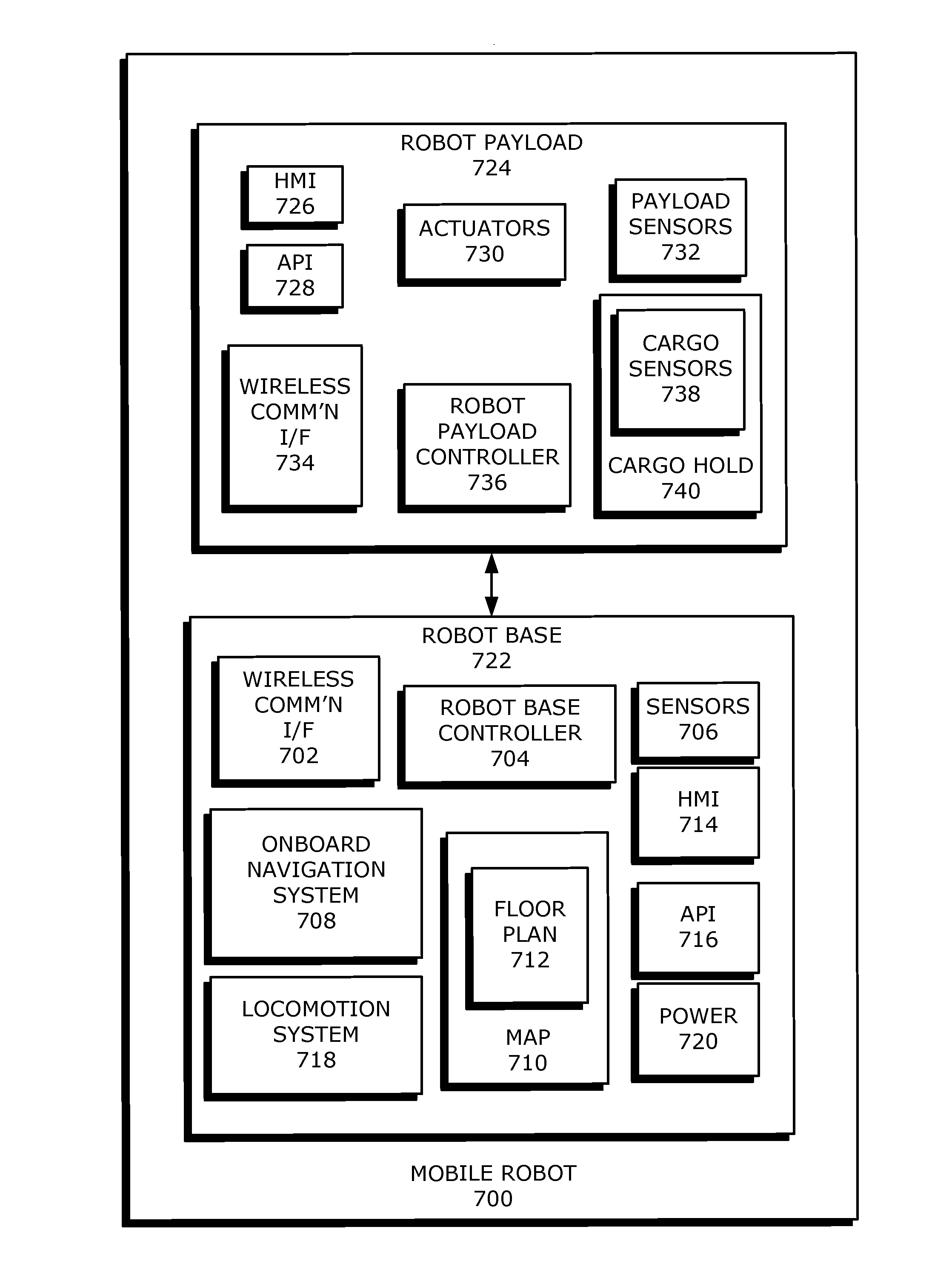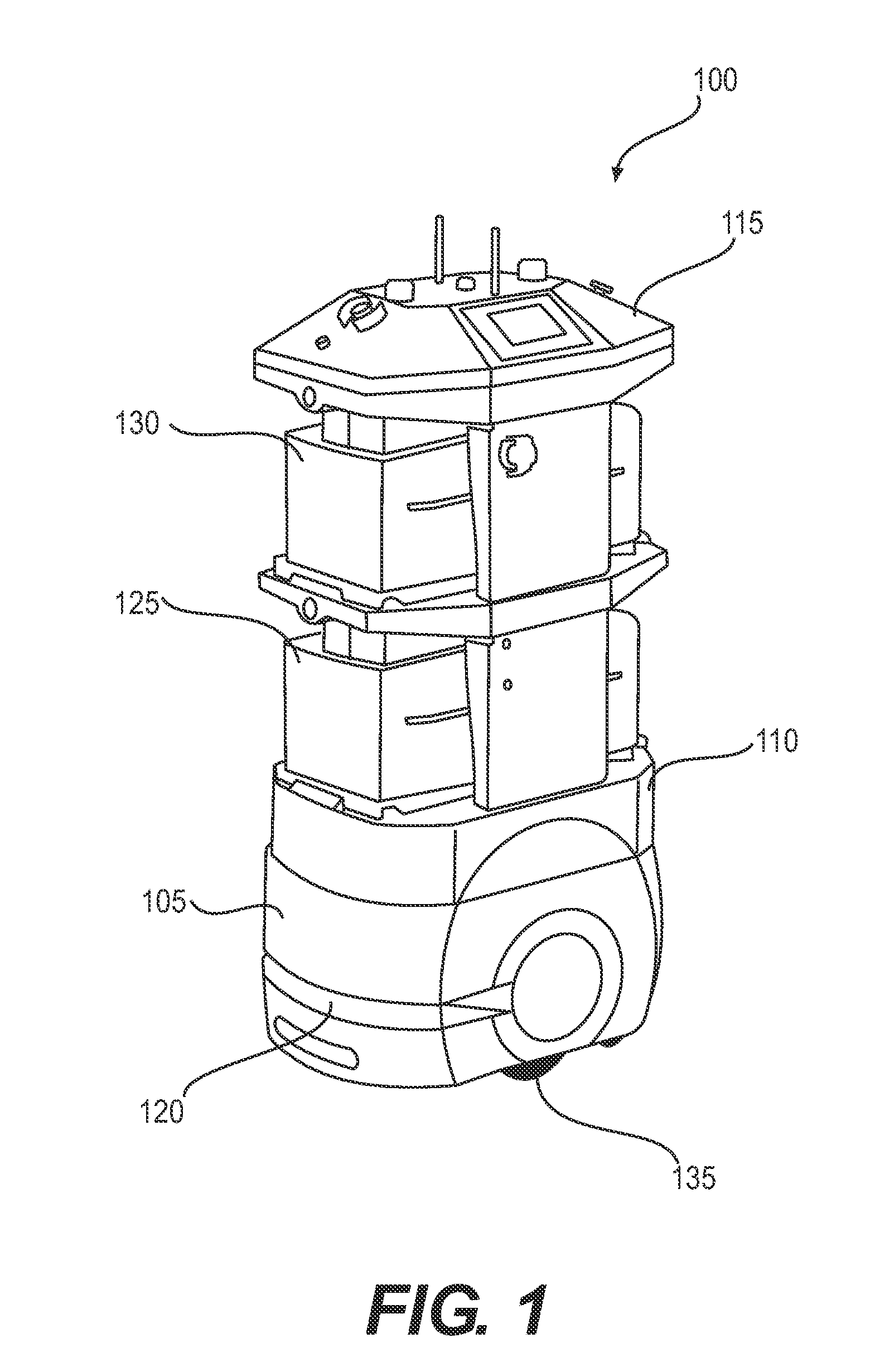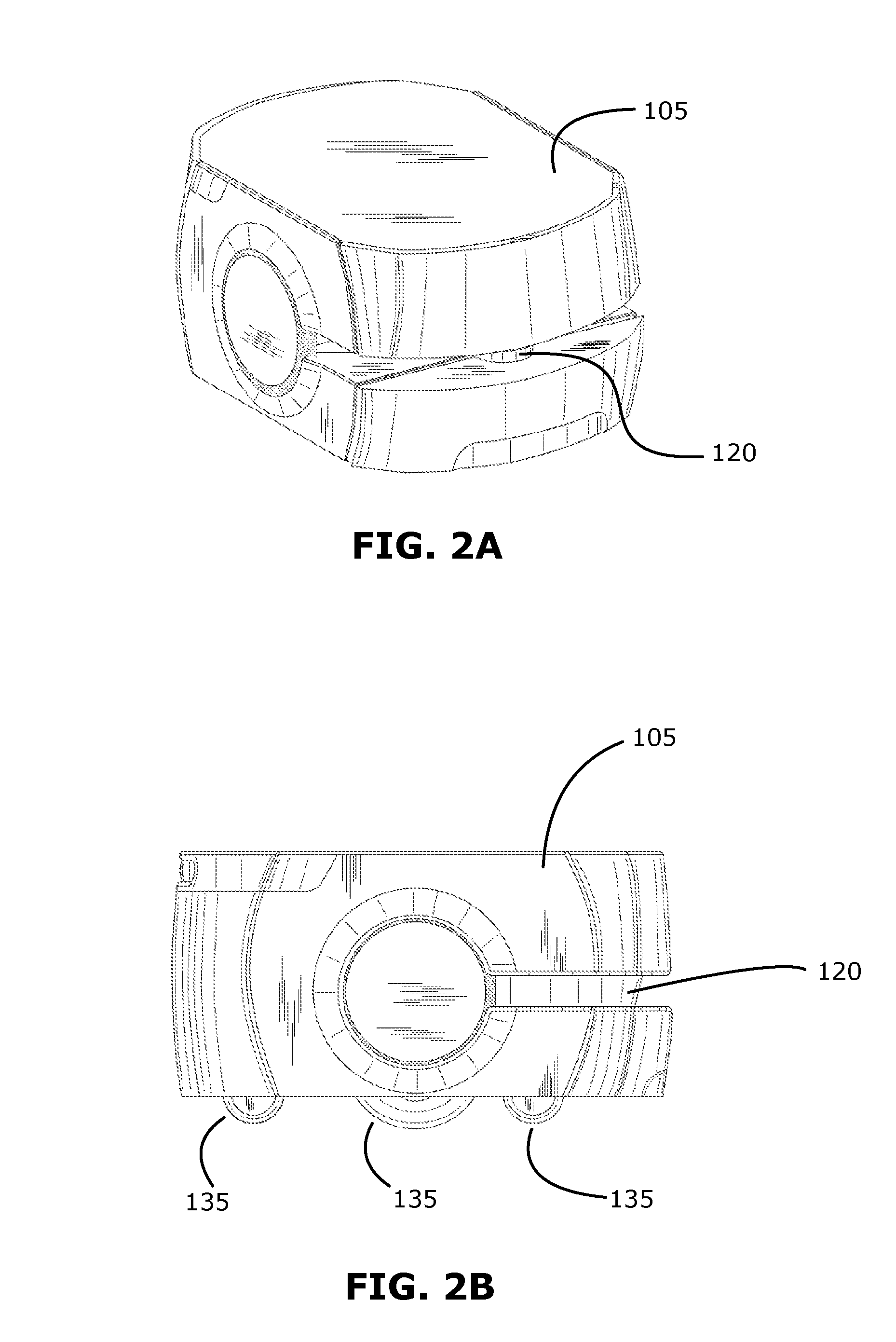Autonomous mobile robot for handling job assignments in a physical environment inhabited by stationary and non-stationary obstacles
a mobile robot and physical environment technology, applied in the field of mobile robots, can solve the problems of difficult tracking, exposing human operators to increased risks of physical injury or death, and exposing manufacturing equipment and products to higher contamination levels caused by human presence, so as to avoid potential collisions and achieve the effect of utility and flexibility of mobile robots
- Summary
- Abstract
- Description
- Claims
- Application Information
AI Technical Summary
Benefits of technology
Problems solved by technology
Method used
Image
Examples
Embodiment Construction
[0037]Reference will now be made in detail to the preferred embodiments of the invention, examples of which are illustrated in the accompanying drawings. Notably, the present invention may be implemented using software, hardware or any combination thereof, as would be apparent to those of skill in the art, and the figures and examples below are not meant to limit the scope of the present invention or its embodiments or equivalents.
[0038]An exemplary embodiment of a mobile robot configured to operate in accordance with the present invention is shown in FIG. 1. As shown in FIG. 1, the mobile robot 100 includes a robot base 105 and a robot payload 110, which is connected to and supported by the robot base 105 as the mobile robot 100 moves about the physical environment. A horizontally-oriented laser sensor 120 on the robot base 105 produces a horizontally-oriented plane of laser light rays (not shown) which, when reflected back to the laser sensor 120, helps the onboard navigation syst...
PUM
 Login to View More
Login to View More Abstract
Description
Claims
Application Information
 Login to View More
Login to View More - R&D
- Intellectual Property
- Life Sciences
- Materials
- Tech Scout
- Unparalleled Data Quality
- Higher Quality Content
- 60% Fewer Hallucinations
Browse by: Latest US Patents, China's latest patents, Technical Efficacy Thesaurus, Application Domain, Technology Topic, Popular Technical Reports.
© 2025 PatSnap. All rights reserved.Legal|Privacy policy|Modern Slavery Act Transparency Statement|Sitemap|About US| Contact US: help@patsnap.com



